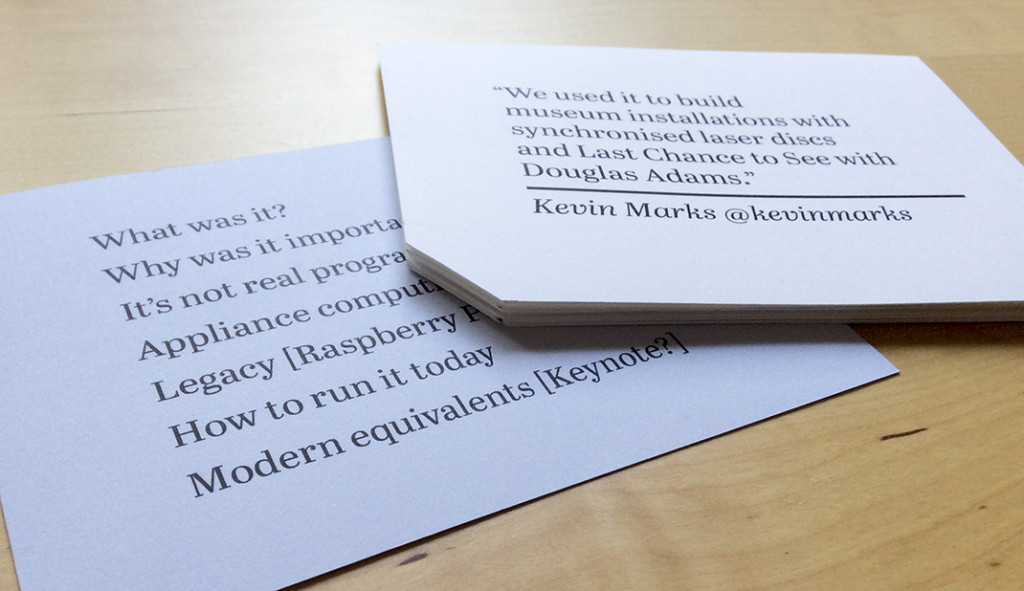It’s amazing how many people claim to love music but say they hate musicals. You probably hate musicals. I have no data to back that up, but I’m about to write over a thousand words on that basis, so we’re both just going to have to accept it.
So, you! The reasons you don’t like musicals, I bet, is because you think they’re frothy, camp and trivial, because they make you cringe, and because you just can’t get over that moment when the strings swell and you know with a dread certainty that a character is about to burst into song. And I get that. Even though I can enjoy those sentimental, highly-mannered musicals, I get that they can be hard to love – or at least, hard to admit to loving.
Not all musicals are like that, though, and if you dismiss all musicals as frivolous confections lacking in substance or merit, you’re going to miss some truly wonderful, valuable and rewarding films and theatre. So to ensure you don’t miss them, let me recommend to you five musicals that even people who don’t like musicals should watch.
Cabaret
I could just recommend this and be done. For one thing, you can marvel at its technical brilliance, at how the songs act as signposts, either pre-figuring or underlining major plot markers. And what signposts. Smart, moving, funny – and often utterly, utterly vicious. In the same way as the ugly spectre of Nazism pervades what could be a bland boy-meets-girl story, so too are even the silliest, most ludicrous musical numbers shot through with twist-the-knife despair and vileness. That very contrast – how an apparently whimsical number called If You Could See Her Through My Eyes about a man dating a gorilla turns on the very last line into an excoriating commentary on anti-semitism – is why it has such power. Sometimes the contrast is less stark, and that can be wonderful too. Witness how, with apparently nothing really changing, the pure, clear, optimistic pean to youthful promise Tomorrow Belongs to Me morphs into a chilling march, prophesying the apparently inevitable rise of the Third Reich.
And besides, despite unmistakably being a musical, its characters don’t, as a rule, do that breaking into song thing, and that’s thanks to the clever use of the Kit Kat club – the cabaret of the title – as a useful dramatic construct. The whole thing is actually supremely and terrifically meta; the closing song, Cabaret, is meta meta, and that’s delightful.
You might think you know some of the songs from Cabaret, but stripped of their context, you probably only know their superficial meaning; in context, they can become almost unbearably poignant, powerful and heavy with pathos.
It’s worth seeing in the theatre – a regional rep can do it justice as well as a West End company can – but the 1972 Bob Fosse film is nevertheless glorious. Yes, Sally Bowles should be English, and no, she shouldn’t really be able to sing, but Liza Minnelli gets the fragile femme fatale, ingénue thing so right, Michael York is just wonderful, and Joel Grey is canonical.
(Oh, and it’s anything but a bland boy-meets-girl story.)
Buy on Amazon
Flight of the Conchords
In three paragraphs’ time I’m going to recommend you watch an Andrew Lloyd Webber musical, so I thought I’d better bank some street-cred by first recommending you watch something that’s about as far away from Phantom of the Opera as you can imagine.
If you’ve never seen it (or technically, even if you have), Flight of the Conchords is a comedy TV series set in New York – but it’s very definitely a musical too. Despite being a comedy and despite it being a TV series, it’s actually probably more classically a musical than Cabaret; the songs, as well as moving the plot on, are sung by the primary characters, and they do, I’m afraid, do that bursting into song thing.
The songs, though, are fab; witty, superbly produced and with properly world-class melodies and hooks. It’s no wonder one of the show’s creators, Bret McKenzie, was asked to do the music for The Muppets movie – which is another belter of a musical, incidentally.
Buy on Amazon
Jesus Christ Superstar (specifically the Norman Jewison version)
It’s possible you hate Jesus Christ Superstar, thanks perhaps to its big closing number, to ham-fisted amateur productions or to unbearably camp, leadenly re-contexed productions such as 2012’s O2 stadium performance. And again, I get this.
This 1973 film, though, should change your mind. Its success comes from three factors: the staging, the actors, and the fact that it’s so fucking seventies. I love the spare, almost Brechtian staging – the cast and crew rock up in the middle of the Iranian desert in a van, and film in the ruins of Avdat. It’s beautiful, but because you’re not distracted by how well or otherwise the sets have been built and dressed, it focusses you on the story too.
Even better, the cast is giving it their all. And not in a RADA, X Factor, clenched-fists-and-eyes kinda way. You know how legend has it Carrie Fisher was so off her tits on drugs during filming of Star Wars that she really thought she was in space? I wouldn’t be surprised to learn something similar of the cast here. They are wildly talented, yes, but there’s also a rawness and immediacy to their performances that I don’t think you can fail to respond to.
Then there’s the seventiness. Squealing guitars, the slightly Instagram-ey colour grading on the film, Pan’s People-style dance numbers and awesome hair. It’s awesome – but it also has huge power and potency.
Buy on Amazon
Fiddler on the Roof
Now I’ve convinced you to watch something by Andrew Lloyd Webber, anything else should be easy. So here’s Fiddler, an absolutely classic musical, and of course I’m going to recommend the 1971 film version, also by Norman Jewison – though mostly because I’ve never seen it staged.
As you probably know, it tells the story of a community of Jews and Christians in Russia, and through the marriages made by the daughters of Tevye, the main character, we see a traditional way of life challenged, challenged and challenged again, and we see how Tevye, as a proxy for an entire people, struggles to adapt.
There are some wonderful tunes, some genuine laughs and of course some toweringly nuanced and poignant performances.
This one, I admit, might be a tough sell if you’re a musicals naysayer, just because it’s so classically musically, so don’t make it your first.
Buy on Amazon
The Nightmare Before Christmas
Tim Burton’s Christmas classic is warm, sweet and clever, and a big part of its appeal are the songs – not just the well-known This Is Halloween but also What’s This? and the terrifically well mimicked Oogie Boogie’s Song. I’ve written this at exactly the wrong time to recommend you watch it – optimally, you should watch it on the day you put the Christmas decorations up – but it’s a lovely film to watch at any time of year, and whenever you do, you might catch yourself realising that what you’re watching, indeed, what you’re enjoying, is a musical.
Buy on Amazon
If by the time you’ve watched all five you have either reluctantly accepted that musicals are not entirely lame or have wholeheartedly embraced the form, the good news is that there are many more waiting to be enjoyed – and sometimes, they are films or theatre pieces that you might already know, but have never before thought to enjoy as musicals. The Jungle Book (indeed any Disney cartoon), Chicago with Queen Latifah, Bugsy Malone, Charlie & The Chocolate Factory – especially the wonderful production at the Theatre Royal – that musical episode of Buffy, Labyrinth, the surprisingly touching story of Cole Porter’s life, De-Lovely, and a hundred others can be beautiful, funny, affecting, and filled with pathos, and can tell stories in ways that straight drama just can’t.
As for me, the next I’m going to see is Into the Woods, a 1986 Stephen Sondheim musical which a new film adaptation of has just been released. It’s supposed to be wicked-smart, look stunning and have great tunes — what’s not to love?







